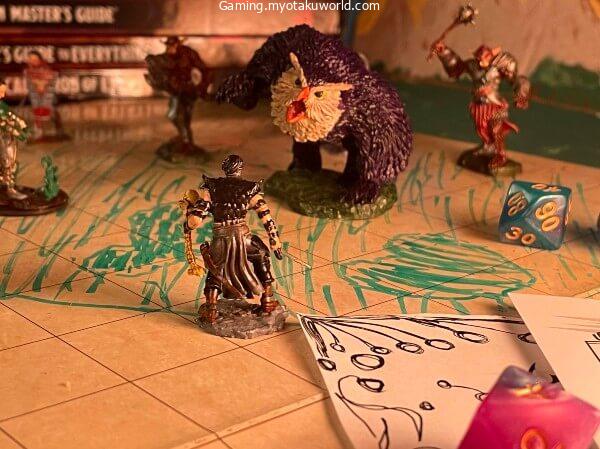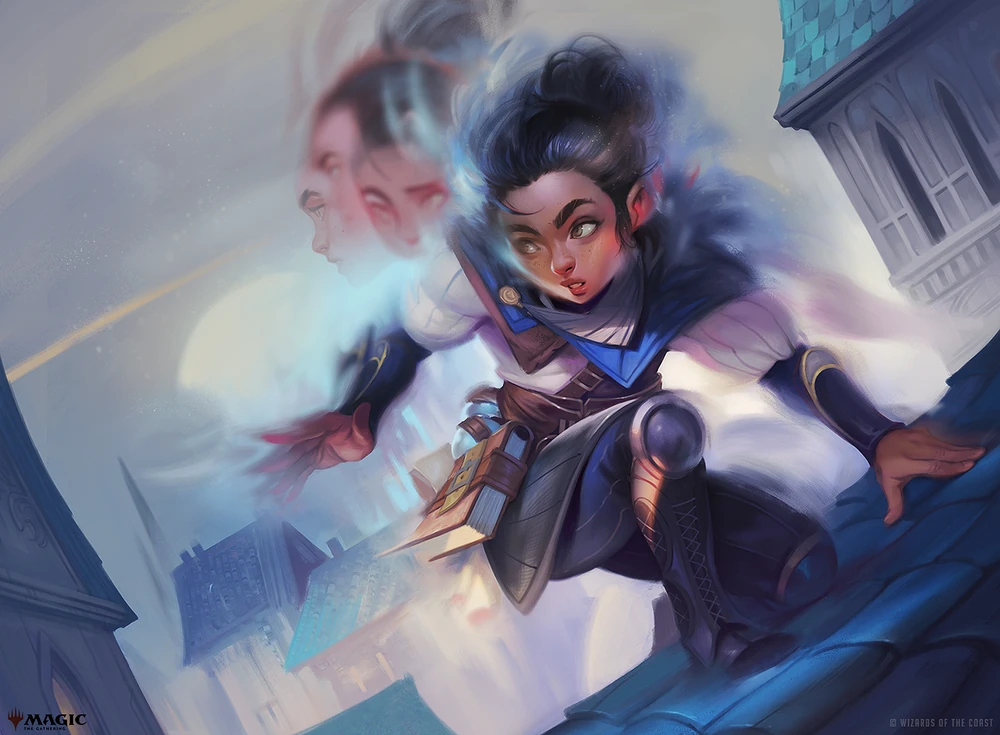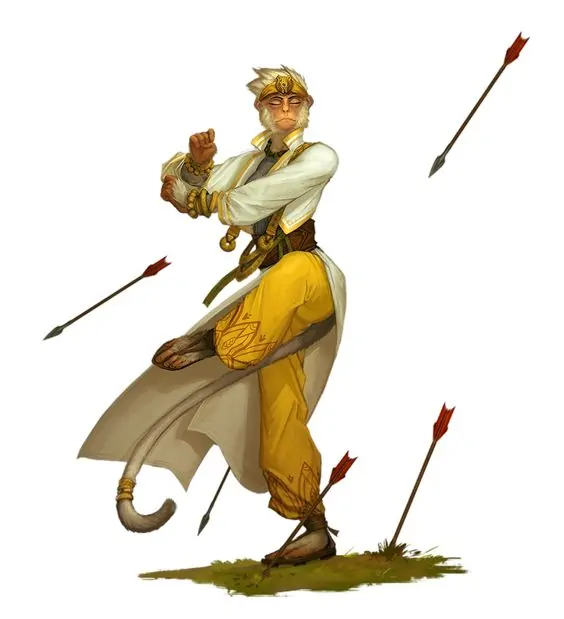When I’m playing a Rogue Class in a campaign, I always have a Dodge Action 5e guide bookmarked. The Dodge action can be used by any class, but because of the roleplaying aspect, I associate it with the Rogue.
I put a lot of effort into developing each character I create and integrating them into the universe. Therefore, I might abuse non-simple assault behaviors like disengaging, Hide, and dodging in this situation.
I always use Dodge in video games like it’s going out of style. As a result, whenever I play D&D and have nothing else to use my action on, I instinctively prefer Dodge.
The Dodge Action Rundown
- Type – Action
- Use – Avoid Attacks
- Who Can Use – Anyone
- Duration – Until the end of your next turn
- Grants – Disadvantage on attack rolls directed towards you; advantage on Dexterity saving throws
- Ends abruptly – If you are incapacitated or your speed is 0
The Dodge action allows you to possibly avoid attacks. You usually have to put all of your efforts into dodging, hence it being an action, but there are ways to make it a bonus action.
When to Use the Dodge Action
Even while it feels cool, using Dodge isn’t always the best option. Attacking, using Ready Action, or choosing another course of action are all occasionally superior options. The Dodge move is a smart choice if you wish to make an effort to avoid being attacked.
This is particularly effective when the adversary is getting ready to cast a potent spell or something comparable. It makes it much more difficult to hit you, but it doesn’t make it impossible.
It is impossible to prevent either your opponent from rolling two 20s or yourself from rolling two 1s. So, luck is still crucial, and if you ask for Bardic Inspiration in advance, it can still save your life in a pinch.
Rules of Dodging in D&D 5e

Here are some quick rules clarifications for the dodge action in 5e:
- Anyone can use the dodge action. “Dodge” is one of the ten main actions that every Dungeons and Dragons creature can take. Dodging does use your action for the turn, so you cannot attack and dodge on the same turn under normal circumstances. You can move on the same turn as you use dodge, and use your full movement speed if you like. You can also use bonus actions on the same turn as dodging.
- Dodge doesn’t help against grapple or shove attempts. Because grapple and shove attempts don’t involve an attack roll or a Dexterity saving throw, the dodge action does nothing to help against these special attacks (SAC 10).
- The dodge action ends early if your speed drops to 0. This does not mean using all your movement in a turn; you can move as much as you like while dodging. However, if any of these conditions are applied to you, your speed drops to 0 and you lose the benefit of the dodge action:
- Grappled
- Incapacitated
- Paralyzed
- Petrified
- Restrained
- Stunned
- Unconscious
- Dodge doesn’t help against attacks from hidden attackers. As the rules state, dodge only works “if you can see the attacker.” This means that invisible creatures and those who are hidden from you (PHB 177) won’t suffer from a disadvantage on their attack roll against you. However, you still have an advantage on Dexterity saving throws, even if you can’t see the attacker. To be clear: being able to see the attacker doesn’t literally require you to be looking at them to benefit from dodging. Line of sight just implies that a straight line can be drawn between the two creatures, so don’t worry about which way creatures are facing relative to each other when calculating whether dodge works.
- Dodge works against opportunity attacks. Opportunity attacks fall under the category of “any attack roll,” so dodge certainly works to give an attacker disadvantage on their opportunity attack.
When Not to Use the Dodge Action
Dodge doesn’t always work. If you have something else that helps you evade attacks or if you have a better use for your action, then don’t use Dodge. Also, remember exactly what Dodge does.
Dodge only works if the attack targets you. It doesn’t work against abilities or Area of Effect attacks that would hurt you and others without targeting you – ex. Fireball. So if you are up against an elementalist, maybe Dodge isn’t a great idea.
Also, if your Dexterity is really bad (advantage may not even help) or really good, it may not be necessary. If your Dexterity is 20, then your saving throw may not need advantage – at least not if there is another action you have your eye on.
How to Get a “Free” Dodge in 5e
There are a few ways to get a free Dodge in D&D 5e. When I say “free,” I mean that you can get Dodge as a bonus action. Also, despite popular belief, the Rogue’s Cunning Action does not allow you to Dodge as a bonus action.
Uncanny Dodge
Uncanny Dodge isn’t the same as the Dodge action. Uncanny Dodge is a Rogue ability that allows the Rogue to use its reaction to half all damage an attack would do. Because it’s a reaction, there are a few rules.
It can only be used once per round, and you can’t use an opportunity attack the same round you use it. It’s still really powerful, and it doesn’t take the place of Dodge – you can use them both.
Be a Monk – Patient Defense
A Monk can use one ki point to Dodge as a bonus action on their turn. This is incredible, but it does consume a ki point, which is a valuable currency for the Monk. Without ki points, they become quite weak.
Still, it’s definitely worth it in most cases because you use Dodge as a bonus action and can still use your action on your attack. This can help your Monk make a risky move and still survive.
Evasion

It’s easy to confuse Evasion and Dodge. But Dodge is an action everyone can use, while Evasion is a Feat you must pick up, and you must have both high Dexterity and Perception proficiency.
When you choose it, you can “dodge” out of the way of AoEs. You can automatically make a Dexterity saving throw every time you are subjected to an AoE and no damage upon success instead of half damage. Then take half damage if you fail.
Cloak of Displacement
This rare cloak projects an illusion that makes it look like you are standing somewhere other than where you are standing. This doesn’t sound like Dodge, but the effect is nearly identical.
When you wear it, enemies have a disadvantage on attack rolls made against you. If you do take damage, the cloak stops working until your next turn. It doesn’t work if you are Incapacitated or Restrained.
Blur

If you’re a Sorcerer, Wizard, or Artificer, then you can use Blur. Again, although it may not look the same, it operates the same as Dodge. You must use your voice to activate this spell.
When you do, creatures that attack you gain disadvantage on those attack rolls. If the attack doesn’t rely on sight, then Blur doesn’t work. It also doesn’t work if the attacker has truesight (or something similar).
Action Surge
There may be more options than this, but you catch my drift. The Fighter has Action Surge at 2nd level, which allows them to take an additional action. You can use this action to Dodge.
There are likely a lot of homebrews that grant Dodge for free or something like an Action Surge. So if your group allows homebrews, be on the lookout for ones based on extra actions or movements.
Use a Bonus Action as Your “Action”
This is a way that anyone can use Dodge and something else, but it favors specific classes more. Normally, there aren’t many options for bonus actions as they are all granted by feats and abilities.
However, most classes will have something you can use as a bonus action, whether it be a spell, a Hide, or an extra attack. So look through your list and then use Dodge as your action.
Dodging with a Mount

If you are lucky enough to have a mount, it’s good to know what your options are when you want to utilize your trusty steed. For a full guide on mounted combat, check out David Blanc’s Mounted Combat Guide.
You can do a few actions in combat with any mount – Dodge, Disengage, and Dash. If you choose to Dodge, the rules are the same as if you were dodging when not mounted, so fairly straightforward.
What to Use Instead of Dodge
If you don’t want to use Dodge but want something useful like it that isn’t an attack, there are plenty of options. However, these are the actions that I believe are the most closely related and obtainable.
Disengage
The Disengage action makes it where you don’t provoke opportunity attacks when you move around enemies. Normally, you do if you move away from enemies, which is why this is so useful.
Bonus Action: Both the Monk and the Rogue have ways to Disengage as a bonus action. The Rogue actually has more than one way to do this. For everyone else, you can pick up a homebrew feat/class or have Haste cast on them.
Dash
Dash doesn’t take Dodge’s place, but it does let you move double your movement speed. You can use Dash as a bonus action in certain cases. If you can’t, you can “engage” or get far away from an enemy.
Bonus Action: Same as the way to get Disengage as a bonus action. You can even – with the DM’s okay – use a Bonus Action Dash and an Action Dash to move four times your movement speed in one turn.
Ready Action
Readying your action is a good bet a lot of the time, but I see players neglect it time and time again. When you use Ready Action, you tell the DM circumstances that will allow you to use your action as a reaction before your next turn.
Tell them, “If X happens, then I Y.”
Bonus Action: There isn’t a straightforward way to get Ready Action as a bonus action, but you can be creative.
Improvise
Improvise isn’t a real ability, but if your DM is flexible, you can improvise with a variety of actions. So instead of Dodging, you can duck, slide, or sniff for no reason. This wouldn’t have the same effects, but you can find a happy medium that’s fair yet makes you feel super fly.
Bonus Action: An improvised ability won’t be a bonus action unless you’re spinning a bonus action you can already use.
Help
The Help action is something I use whenever I don’t know what to do. When you use it, you give another creature advantage on their next ability check on the task you are specifically helping them with. You can also use it to distract an enemy, which also gives the ally advantage on an attack roll.
Bonus Action: the Mastermind Rogue can use Help as a Bonus Action. There may be other ways, but they may grant an extra action or be a homebrew method.
Aesthetics of a Dodge 5e

Aside from the actual operation of Dodge, not much is said about it. This is not so great for those who struggle with ideas but perfect for those who love to create their own cinematics in their mind.
What a Dodge Looks Like
I always imagine Dodge looking like a ninja roll or a backflip for the Rogue and Monk. Then for other classes – especially those in Heavy Armor – it looks like a simple side step with the player concentrating hard.
How Far a Dodge Goes
The Dodge doesn’t grant you any movement speed. It is likely more like a duck or a sidestep. If you want it to look cool like a backflip, then you will have to land in the same spot that you started in.
Tips For The Dodge Action
The dodge action can cause some problems for DMs in terms of tactics, role-playing, and reality. This is what I think about these questions:
- After one round, beings you run past will be able to see that you dodged. Even though the rules don’t say if creatures know what it means to dodge, I think they can tell that a creature that dodges isn’t attacking and seems more focused on escaping damage.
- In answer, they should probably focus on something else (if doing so won’t put them in more danger).
- But, and this is a big but, don’t just ignore the person who is dodging. The point is that creatures won’t know what’s going on until they see proof that the creature is dodging. If you don’t, you’re meta-gaming and making the well-thought-out action of your player less effective.
- Let dodging help you avoid pushes and grapples. I think it’s silly that someone who is “focus[ing] entirely on avoiding attacks” is just as vulnerable to shoves and grapples as anyone else.
- Since being shoved or grabbed lets the target choose between an Athletics or Acrobatics check, I think a player who has used the dodge action should have advantage on this check.
- Set a limit on how many strikes dodge can stop per round. Some DMs don’t like how a player can avoid an endless number of attacks per round by using just one action. This has never bothered me, but it does bother some of them.
- If you don’t like this, you can always limit how many hits and/or Dexterity saving throws a creature can use dodge against. I can see why it would make sense to link it to the character’s Dexterity factor and proficiency bonus.
FAQs
Can You Dodge Underwater in DnD?
Yes. Because there aren’t many rules for fighting underwater, you can use any of your moves just as you would if you weren’t underwater. You can even use Fireball like any other spell. The only thing that is hard is to move.
Is Dodge Always An Action?
It’s not always a move to dodge. If you are a Monk, dodging is an extra action. If you are not a Monk, dodging is always an action. If you want to avoid an attack, you have to think outside the box.
Can Dodge Be A Reaction?
Dodge can only be a response if you prepare it with Ready Action. But that would be a little pointless since Dodge lasts the whole round, so using it is the same as getting ready to move.
Is Uncanny Dodge Like the Dodge Action?
It kind of is, since both can make it harder to hit you or make it so you take less damage. However, Uncanny Dodge makes it so you take half as much damage, while Dodge makes it harder to hit you.
What is Evasion in 5e?
This is an easy feat that lets you avoid abilities that affect a large area. So it’s not the same as Dodge, which doesn’t work against skills or attacks that don’t target you, which is an advantage of AoEs.









